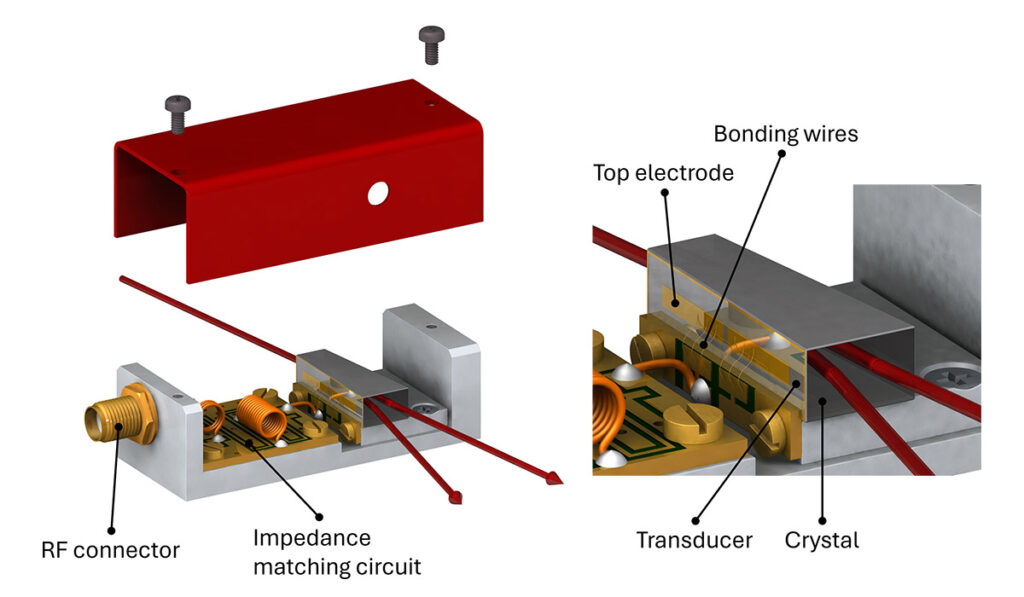Constitution of a bragg cell
A piezo-electric transducer generates the acoustic wave when driven by an RF signal.
The transducer is placed between 2 electrodes. The top electrode determines the active limits of the transducer. The ground electrode is bonded to the crystal.
The transducer thickness is chosen to match the acoustic frequency to be generated. The height of the electrode H depends on the type of application, and must exceed the laser beam diameter. For a deflector, it is selected in order to collimate the acoustic beam inside the crystal during propagation.
The electrode length L is chosen to give the required bandwidth and efficiency.
The shape of the electrode can be varied for impedance matching or to “shape” the acoustic wave.
An “apodization” of the acoustic signal can be obtained by optimizing the shape of the electrode.
An impedance matching circuit is added to couple the transducer to the driver. Indeed, this circuit is necessary to adapt the Bragg cell to the impedance of the RF source (in general 50 Ohms), to avoid power returned losses. The RF power return loss is characterized with the VSWR of the AO device.

The crystal will generally be AR coated to reduce reflections from the optical surfaces. Alternatively, the faces can be cut to Brewster’s angle for a specific wavelength.
A variety of different materials can be used. All have their own advantages and disadvantages.
- Length of the crystal: typically 3 to 50 mm
- Transducer thickness: typically 1 to 100 µm
- Electrode thickness: typically 0.1 to 10 µm

